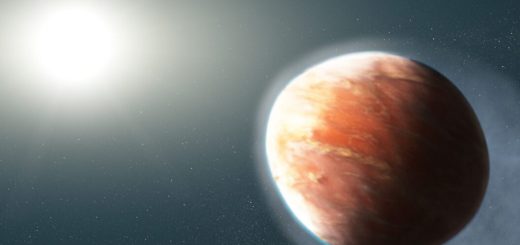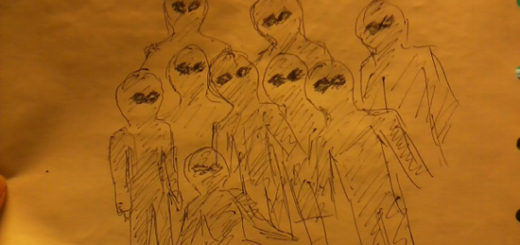Rosette Nebula In Constellation Monoceros And Its Puzzling Center

For decades astronomers have tried to explain the discrepancy between the size and age of the Rosetta Nebula’s central cavity and that of its central stars.
The size and age of the cavity observed in the center of Rosette Nebula is too small when compared to the age of its central stars.
Now, researchers from the University of Leeds, offers an explanation. Through computer simulations, astronomers at Leeds and at Keele University have found the formation of the Nebula. A thin disc-like structure of the cloud focusing the stellar winds away from the cloud’s centre would account for the comparatively small size of the central cavity.
The Rosette Nebula in the Milky Way Galaxy spans about 100 light-years across and lies approximately 5,000 light-years from Earth. It can be seen with a small telescope towards the constellation of the Unicorn (Monoceros).
This giant molecular cloud – known for its rose-like shape and distinctive hole at its center – is likely to be in a thin sheet-like molecular cloud rather than in a spherical or thick disc-like shape, as some photographs may suggest.
“The massive stars that make up the Rosette Nebula’s central cluster are a few millions of years old and halfway through their lifecycle, “ study lead author, Dr Christopher Wareing, said in a press release.
“For the length of time their stellar winds would have been flowing, you would expect a central cavity up to ten times bigger.”
“We simulated the stellar wind feedback and formation of the nebula in various molecular cloud models including a clumpy sphere, a thick filamentary disc and a thin disc, all created from the same low density initial atomic cloud.
“It was the thin disc that reproduced the physical appearance – cavity size, shape and magnetic field alignment — of the Nebula, at an age compatible with the central stars and their wind strengths.”
“To have a model that so accurately reproduces the physical appearance in line with the observational data, without setting out to do this, is rather extraordinary,” Dr Wareing added.



 Creators of mankind
Creators of mankind Description of “Tall white aliens”
Description of “Tall white aliens” Where they came from?
Where they came from? About hostile civilizations
About hostile civilizations The war for the Earth
The war for the Earth “Tall white aliens” about eternal life
“Tall white aliens” about eternal life Video: “Nordic aliens”
Video: “Nordic aliens” Aliens
Aliens Alien encounters
Alien encounters The aliens base
The aliens base UFO
UFO Technology UFO
Technology UFO Underground civilization
Underground civilization Ancient alien artifacts
Ancient alien artifacts Military and UFO
Military and UFO Mysteries and hypotheses
Mysteries and hypotheses Scientific facts
Scientific facts


















